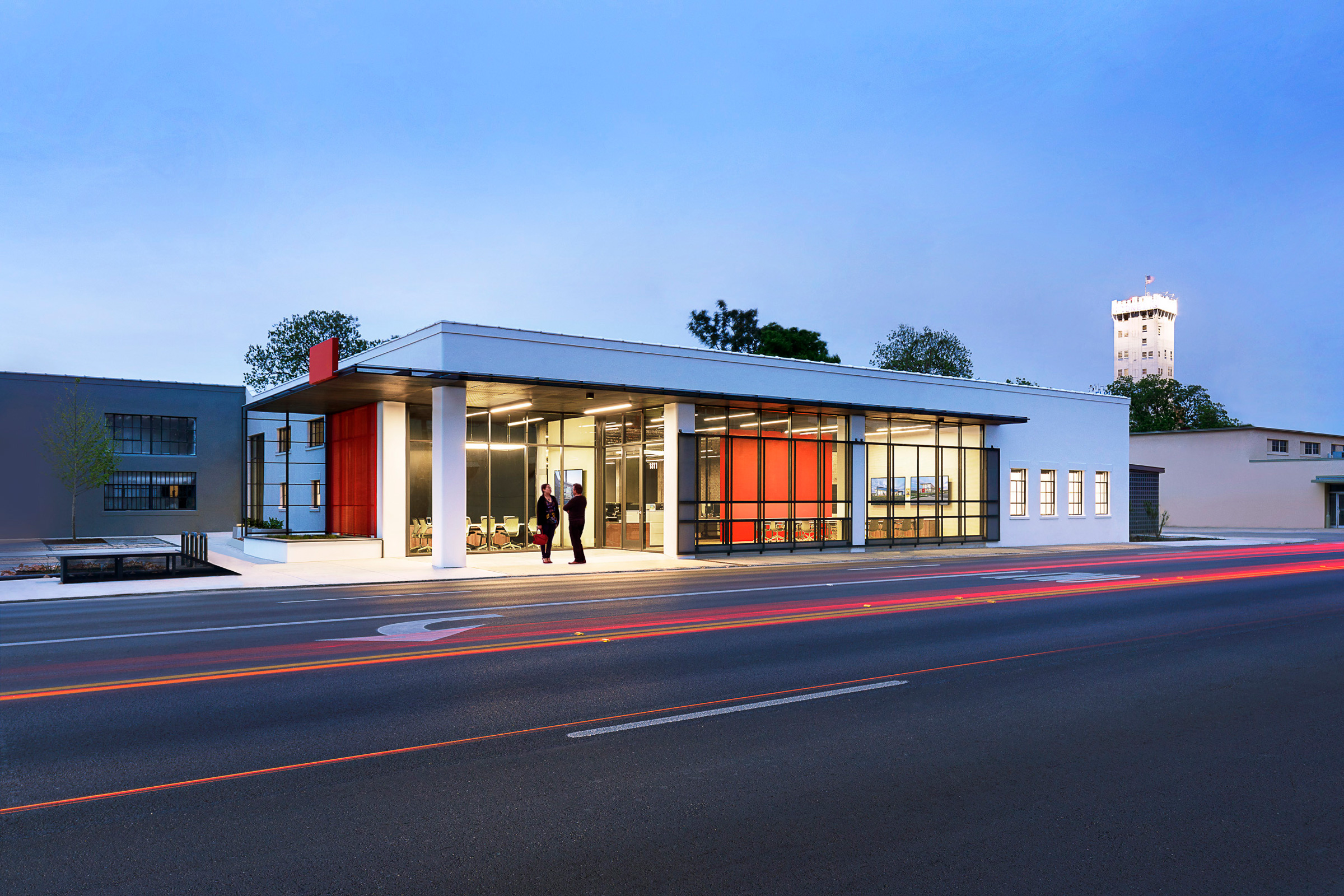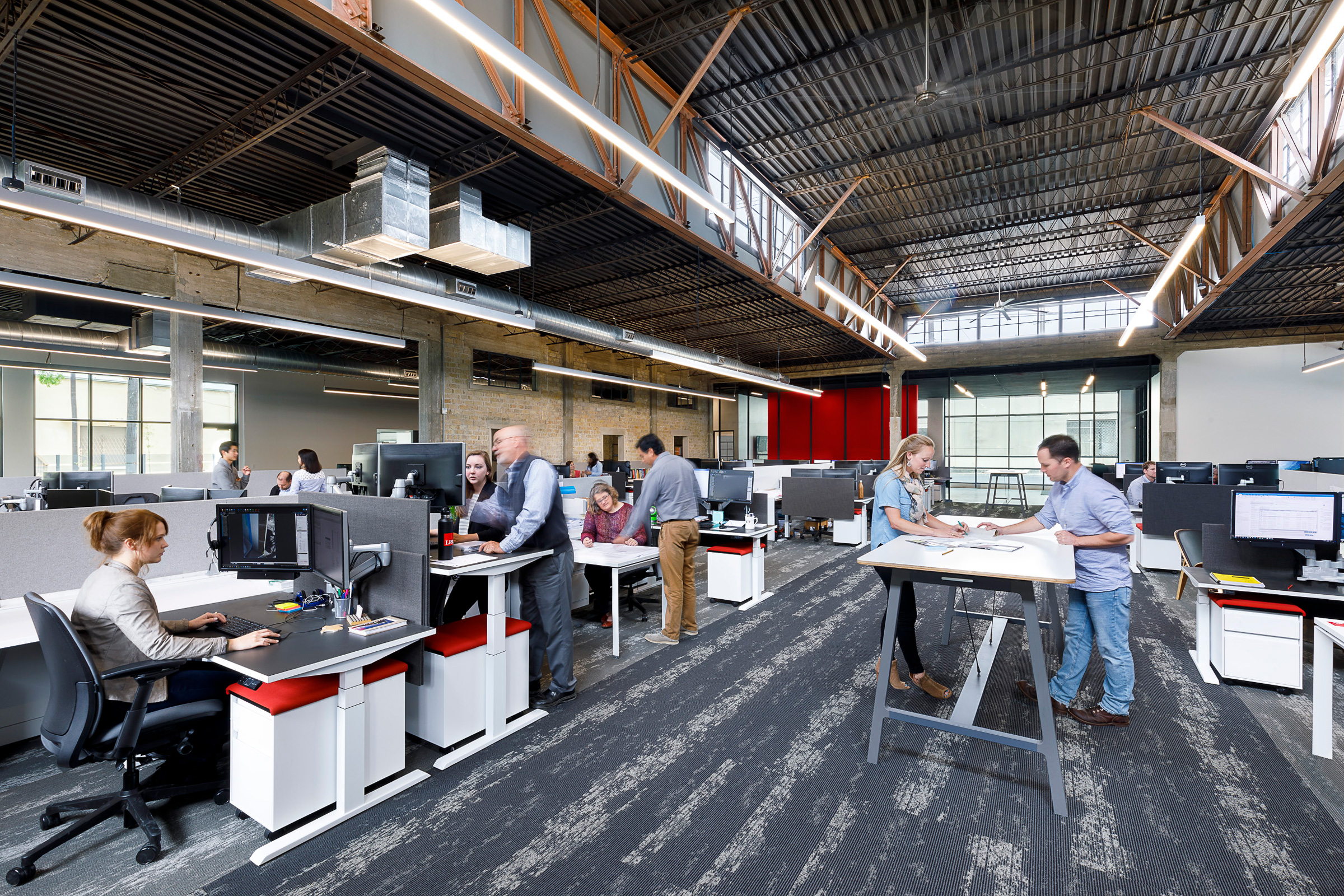Story at a glance:
- LPA Design Studios looks at the benefits—and the beauty—of renovations.
- The architects found that, on most renovation projects, energy use and water use could be improved by 30 to 50% with today’s best practices.
- These days LPA is using modeling more often to better predict how a renovation will impact performance and operating costs.
As young architects we grow up excited about the opportunity to design a new building from the ground up. In school we’re often taught by example and training to take a site, the blank canvas, and create a vision for a completely new structure.
In the face of the realities of climate change, we need to adjust our thinking. The real battle to reduce the building industry’s effect on the environment will be fought in how we address the massive stock of aging and existing buildings. A 2012 survey by the US Energy Information Administration found that half of the country’s 5.6 million commercial buildings—including office, hospitality, education, and health care facilities—were constructed before 1980. Two-thirds of the building area that exists today will still be in use in 2050, according to industry estimates.
For every new building we build there are hundreds of existing buildings that need the same level of care and design to mitigate their emissions. Outdated mechanical systems and underperforming envelopes are large contributors to the building industry’s carbon emissions, which account for nearly 40% of total global greenhouse gas emissions, according to the Global Alliance for Building and Construction. Currently, building renovations affect only 0.5 to 1% of the building stock annually, according to data compiled by nonprofit group Architecture 2030.
As an industry we need to focus the same creativity and innovation we apply to new buildings on renovations. The old phrase, “the greenest building is the one already built” is truer now than ever. If we’re really going to affect climate change, we need to address the existing stock of buildings. That starts with recalibrating how we analyze and evaluate older buildings, ensuring we are maximizing the life cycle and value before tearing it down. As architects, we need to find the same passion, opportunities and beauty in renovations as we do for new buildings.
A Different Approach
Renovation has always been part of what architects do, but resiliency and climate change mitigation have increased awareness of its importance. The calculation for determining whether to renovate or tear down has changed. There are more factors we need to consider, more data available to shape options.
In the past the importance of embodied carbon was rarely discussed. There was little consideration given to the materials, manufacturing, or the transportation-related carbon emissions associated with renovations vs. new construction, nor the sustainability impact of demolishing the building, removing the waste, and repeating the construction process.
Asking Tough Questions

Outside work and social spaces also offer a bit of an escape at 3250 Olcott in Santa Clara. Photo by Costea Photography
With clients, the evaluation typically starts with costs. That hasn’t changed, and it won’t change. Tough questions are always part of the discussion: Do you need to upgrade the structural system? How complex and how expensive will it be to update the existing building systems? What condition are they in?
Upgrades to meet more stringent building codes always need to be considered. The complexity of a renovation often dissuades clients and architects who might find it easier to simply demolish the building down and start over.
With so many issues, it’s essential to approach a renovation with an integrated team, exploring every aspect of the design. Including engineers, interior designers, and landscape architects at the earliest stages of the process allows the evaluation and design process to take a more holistic view, including health and wellness and the user experience. Decisions shouldn’t be made in a vacuum. A more detailed, holistic exploration of the project can uncover new ideas, different options, and create a better evaluation of the issues that will need to be addressed.
At LPA Design Studios, we have an in-house research team called LPAred that helps us evaluate and examine different aspects of the issues, from employee habits to the energy savings found in different glazing choices. On several projects, they have helped us analyze core aspects of the building’s performance, including the first cost of materials that may not have the durability and lifespan of materials in older buildings.
We have many more tools these days to help us quantify the real carbon impact of building new versus renovating. Life cycle assessment applications such as Tally, developed by Kieran Timberlake, allow us to evaluate materials and design options. Before we were operating on gut instinct; today we can work from hard data when we discuss costs and savings with our clients. LPAred prepares post-occupancy evaluations and helps us measure outcomes and link them to the intent of the sustainable design.
The research-focused approach affects our work in many ways. In Santa Clara, the owner of a nondescript 1970s-era, three-story office building, 3250 Olcott, was considering a teardown in the face of tough competition. LPAred helped us select materials and understand the potential energy savings of the proposed improvements. This included the new glazing, new systems, and the addition of a two-story glass entryway. The renovation cost an estimated 60% less than the cost of new construction and produced rents competitive with the new Class A buildings in the area. The LEED Gold–certified renovation, which earned a COTE award from AIA-Orange County, also preserved the mature redwood trees on the site, which would have been unlikely in a new build.
We’re also using modeling more often to better predict how a renovation will impact performance and operating costs. For the redesign of 606 Wilshire, a seven-story office building in Santa Monica, we used early phase modeling in Climate Studio to help the client understand the potential energy and cost savings of different glazing and shading options, as well as the impact of operable windows, giving the owner actionable data that a combination of passive shading, a reduction in the window/wall ratio and operable windows could reduce the thermal energy lost in the building envelope by 91% and save $21,000 a year in operating costs.
But progress doesn’t take a huge leap in cost or technology. On most renovation projects, we’ve found energy use and water use can be improved by 30 to 50% with components that are best practices today.
An Opportunity

The team at LPA Design Studios transformed their long-vacant, 10,300-square-foot retail space in the up-and-coming Southtown industrial district of San Antonio. Photo by Costea Photography
Although renovation projects are not traditionally as exciting as new builds, they provide architects with a chance to display their creativity and skills. A renovation challenges design teams to think differently and seek alternatives, to work within the constraints of the site, and budget to develop a building that performs as well as inspires.
On every renovation there is the potential to transform spaces without the cookie-cutter approach restraining many new builds. A successful renovation brings out the attributes of the original, while creating better spaces and more efficient systems. Renovations present an opportunity to create something authentic and different, rooted in its place and history.
For our San Antonio studio, we transformed a long-vacant, 10,300-square-foot retail space in the up-and-coming Southtown industrial district. New windows and a roof assembly were installed, and the finishes were stripped down to reveal the vintage structure and brick walls. Research included a post occupancy evaluation of our San Jose studio, conducted in collaboration with UC Berkeley’s Center for the Built Environment, to analyze lighting, acoustics, thermal comfort, and furniture. Energy modeling was used at multiple stages to analyze the building, and studies were conducted of the different materials and their impact on users.

Inside LPA Design Studios’ space in the Southtown industrial district in San Antonio. Photo by Costea Photography
The finished project earned LEED Platinum certification, with the help of a photovoltaic system that offsets more than 50% of the total energy use. We were also able to create a more sustainable environment around the building, including a system to capture stormwater runoff and treat it onsite using the combination of a cistern and bioretention areas.
The San Antonio studio is also a great place to work—a bright open, healthy space that connects with the street and community and helps uplift the neighborhood. When I talk to architecture students, I always remind them that a renovation can display the same aesthetics and beauty as a new building while presenting new opportunities. A renovation moves beyond the limitations of the current use to create something resilient and valuable for years to come, while using a fraction of the materials of new construction. And giving new life to an underperforming building can make a real difference in our fight to change the built environment’s impact on the environment.




